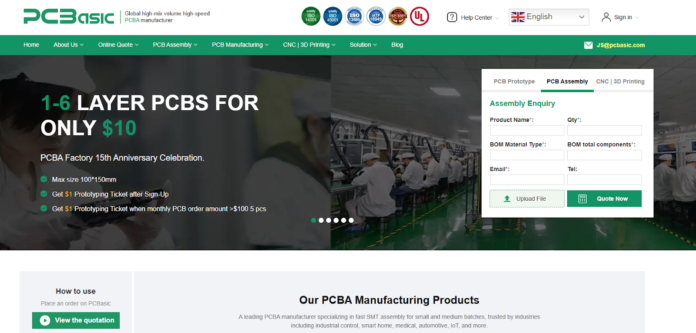What Is PCB Assembly?
Printed Circuit Board Assembly (PCBA) is the process of attaching and soldering electronic components onto a bare PCB to form a fully functional electronic module. A complete PCBA consists of the bare PCB substrate, the various discrete and integrated components, and the solder joints that mechanically and electrically connect everything together.
Why PCB Assembly Matters
Reliable PCB assembly ensures that electronic products perform consistently under thermal, mechanical, and environmental stresses. Advances in assembly technology enable ever‑smaller form factors, lower manufacturing costs, and improved signal integrity—key drivers across consumer electronics, industrial controls, automotive systems, and more.
Surface‑Mount Technology (SMT)
SMT is the predominant method for modern PCBA. In SMT:
- Solder paste is deposited onto PCB pads through a stencil.
- Robotic pick‑and‑place machines accurately position surface‑mount devices (SMDs) onto the paste.
- Boards pass through a reflow oven where solder paste melts and then solidifies, forming reliable joints.
This approach supports very small components, double‑sided mounting, and high production speeds.
Through‑Hole Technology (THT)
Through‑hole mounting is used for components requiring strong mechanical bonds or higher power handling:
- Component leads are inserted into plated holes on the PCB.
- Wave soldering or selective soldering methods attach the components by passing the board over molten solder.
THT remains essential for connectors, large inductors, and components subject to mechanical stress.
Inspection and Quality Control
To guarantee assembly quality and catch defects early, manufacturers employ:
- Automated Optical Inspection (AOI): High‑resolution cameras scan for misplaced or missing parts and solder flaws.
- X‑Ray Inspection: Hidden solder joints beneath BGAs and dense packages are examined.
- In‑Circuit Test (ICT): Probes measure individual nets for opens, shorts, and component values.
- Functional Test (FCT): Finished boards are powered up to verify overall circuit operation.
Design for Assembly Considerations
Optimizing a PCB for assembly yield and reliability involves:
- Maintaining adequate component spacing for pick‑and‑place tools and solder fillets
- Using standardized pad geometries and solder‑mask openings to control solder volume
- Incorporating thermal relief spokes on through‑hole pads for balanced heating
- Including clear silkscreen reference designators for assembly and inspection guidance
Common PCB Assembly Challenges
- Tombstoning: One end of a component lifts due to uneven solder wetting
- Solder Bridging: Excess solder creates shorts between adjacent pads
- Component Shift: Parts misalign during reflow
- Cold Joints: Insufficient wetting leads to weak solder connections
Each issue can be mitigated through stencil optimization, refined solder‑paste formulations, controlled reflow profiles, and proper fixturing.
Choosing a Reliable PCBA Partner
Key factors when selecting an assembly service:
- Industry certifications such as ISO 9001 and IPC compliance
- Capability across SMT, THT, BGA, and specialized processes like flex‑rigid assembly
- In‑house inspection technologies including AOI, X‑ray, ICT, and FCT
- Robust supply‑chain management to ensure genuine, RoHS‑compliant components
- Proven track record with similar project scopes and volumes
Applications of PCB Assembly
PCB assemblies power a vast range of products:
- Consumer devices such as smartphones, tablets, and wearables
- Automotive ECUs, sensor modules, and infotainment systems
- Industrial controllers, robotics, and power‑electronics equipment
- Medical instruments and monitoring devices
- Aerospace and defense electronics requiring ruggedization
Future Trends in PCB Assembly
The next wave of assembly innovation includes:
- Ultra‑fine‑pitch and chip‑scale package integration for higher density
- New substrate materials for high‑frequency and thermal‑management needs
- AI‑driven defect detection and adaptive process control
- 3D assembly techniques with embedded and stacked components
Conclusion
PCB assembly is the critical link between circuit design and finished electronic products. Mastery of SMT and THT techniques, rigorous inspection protocols, and adherence to design‑for‑assembly best practices all contribute to reliable, cost‑effective manufacturing. By partnering with an experienced PCBA provider, engineers can bring innovative electronic designs to life with confidence.

